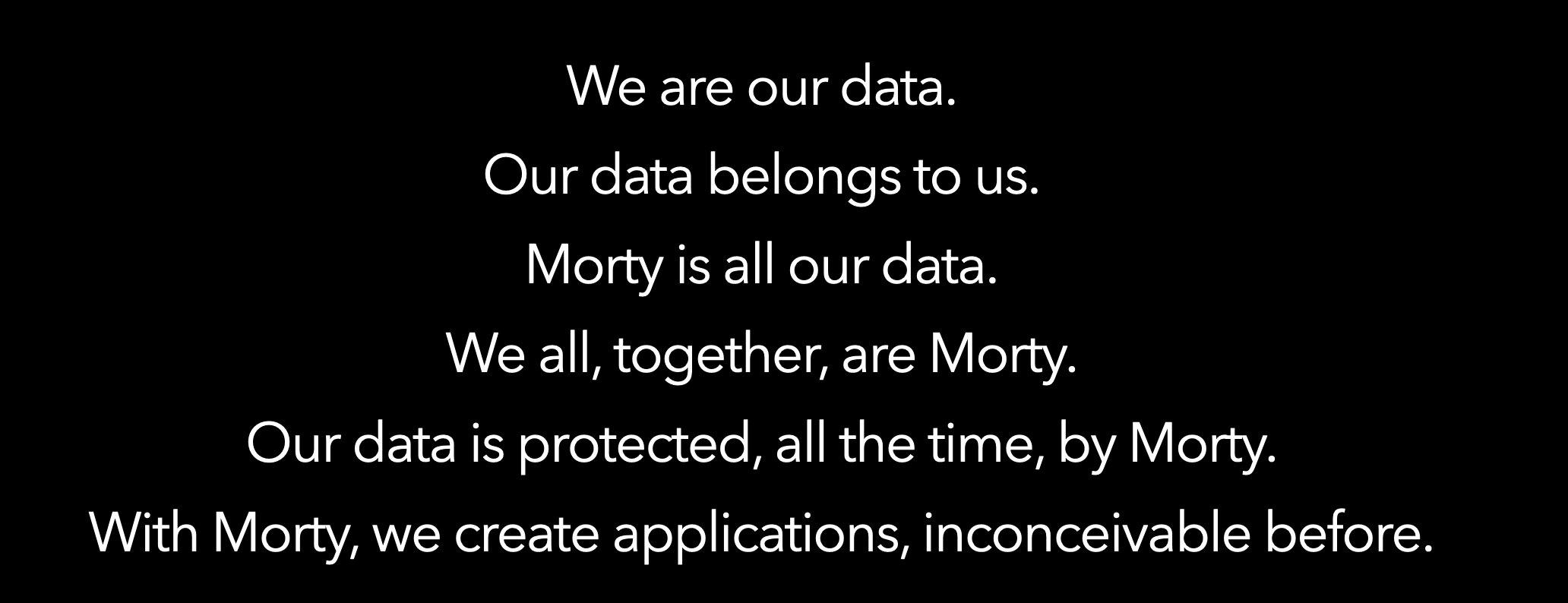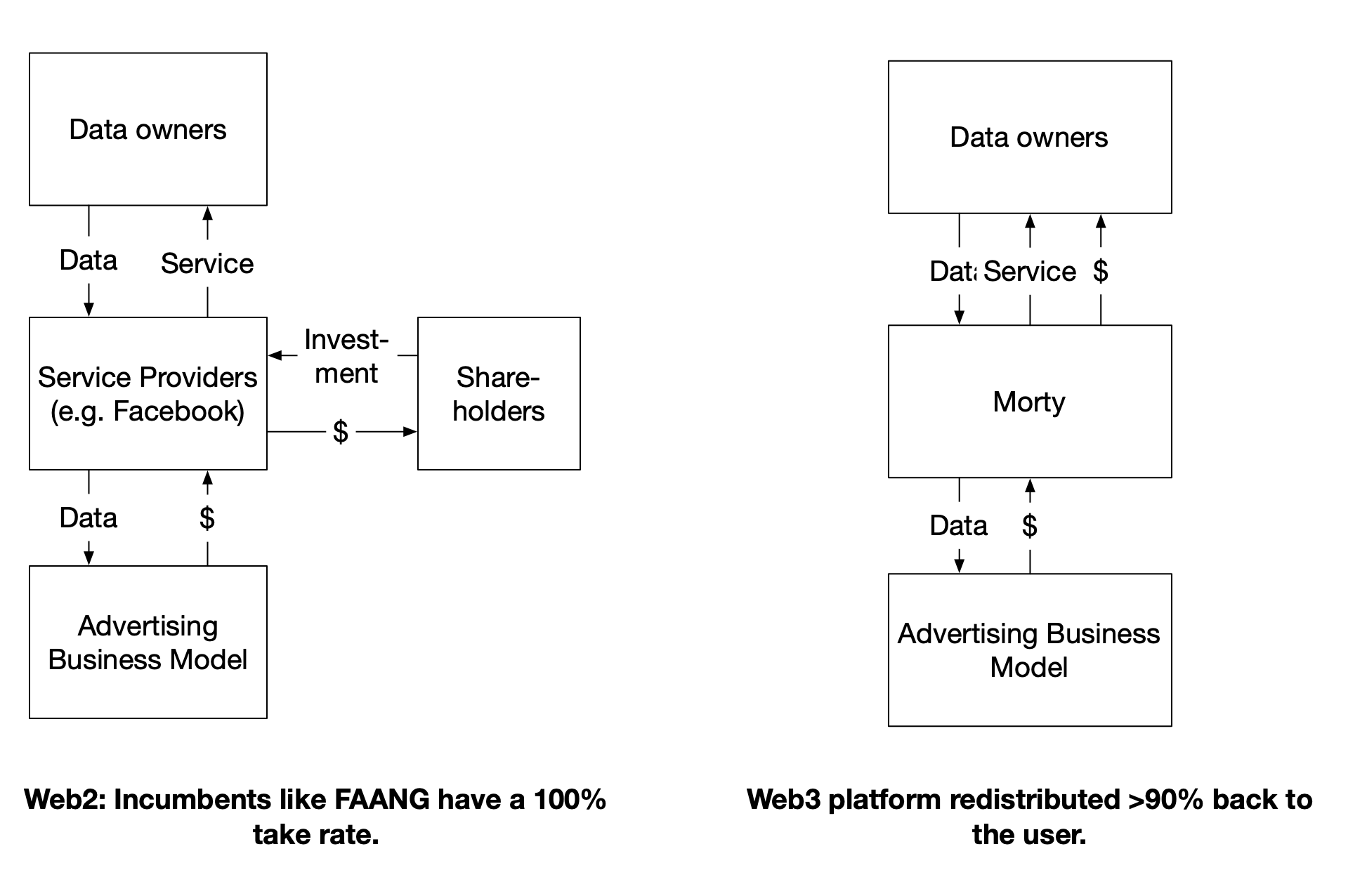
We are our data.
The digitalization of our society is progressing in a breathtaking pace. Nearly every action in our lives leaves digital traces: We carry our mobile phones, being locatable all the time, we shop on the web, providing taste fingerprints to myriads of recommender systems, and we carry Smart Watches, measuring our body signals to monitor our health. While currently, this data is scattered across many distinct places and provider across the internet, we can subsume that an alter digital ego exists, which is defined by all the data that there is persisted on the web, is that is tied to our person. As over time, this alter ego reflects ever more details of our movements, interactions, and moods, this image becomes more and more precise, eventually representing us fully. As digitalization happens likewise to aggregate societal institutions like companies, cities or countries, our digital alter ego becomes the counterpart for real world transactions. For these transactions, it becomes less important of who we really are, it's more important what our data says about us.
Our data belongs to us.
The current paradigm of providing web services is to save the user data at the service provider's premises. This is technically intuitive, but leads to a massive data aggregation from a service perspective. This data aggregation has turned out to be the cash cow of dominating Web2 services like Facebook, Amazon or Google. The enormous amount of details about users paved the way to hyper-targeted advertising business models, disrespecting data sovereignty of users, especially in the early days these services became dominant. In that way, the user is provided with services of debatable quality, while the added value of his data is funneled into the advertising business and ultimately to shareholders. The platform has a data monetization take rate of 100%: Instead of using data revenues to improve the product experience for the user, they provided to a third party.
Morty has a very different approach on this regard. To run the platform, Morty only keeps a take rate of 4.2%, and distributes the remaining 95.8% directly back to the user. In that way, we are disintermediating the advertising market, essentially putting the ownership and rents back in the hands of the cosumer.

Morty is all our data.
Existing platforms create enormous, walled silos of data. For a strategic perspective, raising these silos is often perceived as necessary and commonly referred to as "moat". When the data silos has gained a certain size, due to network effects, it is really has for competitors to enter the market. As a result, the current Web2 landscape is defined by these silos. While some efforts to raise interoperability like "login with your xyz account" exist, and legislators like EU and California have extended data protection rights, from a consumer perspective it is still very hard to generate value with the platform-stemming data outside its boundaries.
In turn, based on its privacy-first design, Morty aims tear down all data silos the user is currently locked in. The implications of this approach are significant. Due to the aforementioned network effects, we estimate the resulting social and content graph to show novel characteristics, unattainable before. It is important to state here that because we expect so much raise in the overall project dynamic by adding various data source from many users, we carved this as a principle of Morty. The hypothesis of significantly raising graph value still needs to be validated by onboarding many users.
We all, together, are Morty.
Referring to 1) We are our data and 3) Morty is all our data, this principle is intended to underline that Morty builds of on the "Power of Many". It is clear that the venture, especially as it is designed to be a DAO data cooperative, depends on a large number of users to join. The sheer amount of participating users is the second defining measure of the value of the resulting graph.
Our data is protected, all the time, by Morty.
Maybe one of the most important and enabling principles is the recent advent of game-changing privacy-enabling technologies. While a detailed discussion would exceed the scope of these principles, from a layman's perspective these techniques allow to generated value out of data without looking at it. This is exactly what happens with our current implementation: All the data is stored encrypted, and computation run on encrypted data, only providing results to the data consumer (e.g. business client). Given we can make sure the computation does not blatantly leak details to the outside of the encrypted space, this is a highly secure and private approach to build analytics and machine learning systems on sensitive data.
This technical foundation is the key enabler, allowing us eventually to build a large aggregate graph of many users, and many cross-domain data sources.
With Morty, we create applications, inconceivable before.
Lets imagine we were Netflix, but somehow for a user did not only see what he did on Netflix, but also on Youtube, Amazon Prime Video, and Apple TV. We would be able to provide way, way better recommendations! But were not done yet. Right now let's integrate his Spotify or Apple Music accounts, the history of his podcast apps, and his E-Book reader history. Again way better recommendations.
It is intuitive and strongly encouraged by different scientific fields that more interconnected graphs have more value [Metcalfe's law, Yoneda Lemma]. Therefore, if we manage to solve the critical mass issue, we expect awesome applications, intangible before.